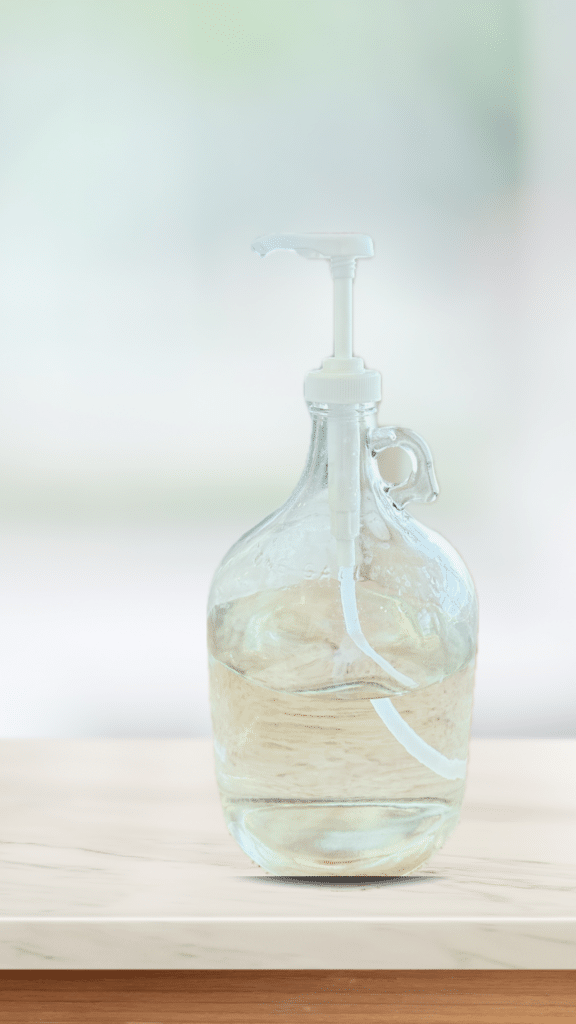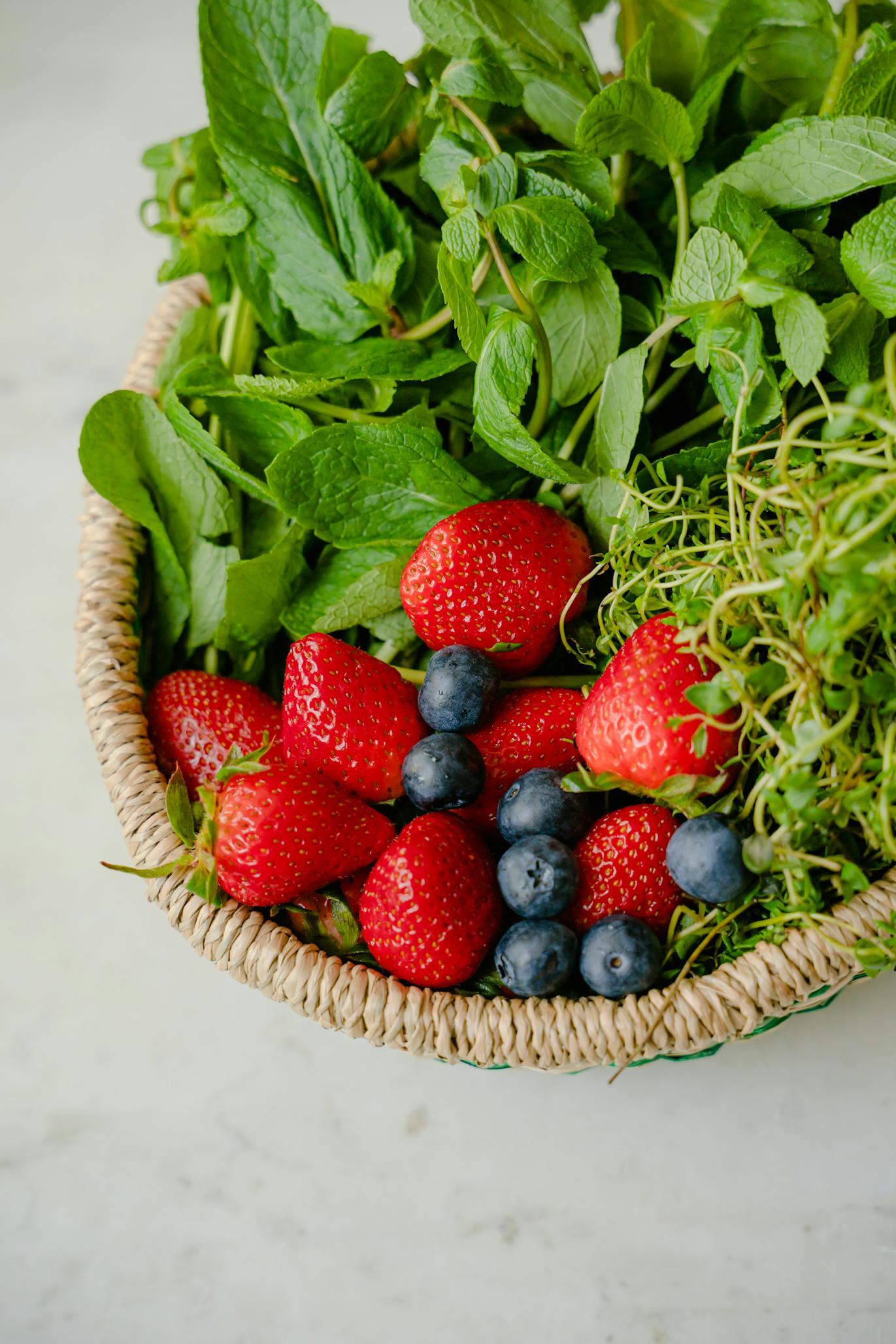Washing And Cleaning Your Produce

Why You Need To Wash Your Produce
Fruits and vegetables can carry dirt, bacteria, pesticides, and other contaminants on their journey from farm, storage, transport and handling by others at the store before it ever gets to your table. By washing them thoroughly, you can remove these harmful substances, reducing the risk of foodborne illnesses. Properly washing your produce can even help your produce last longer. Prioritizing the washing of produce is a simple yet crucial step in promoting overall well-being and hygiene.
What To Use To Wash Your Produce
1. Vinegar

My favorite way to wash produce is to use vinegar. Distilled white vinegar is an inexpensive and cost effective way to clean your produce.
Vinegar kills pathogens and things like mold spores, e. coli, and listeria.
Look for the 5% distilled vinegar, it usually has vegetables on the label to help you identify it. The higher distilled vinegar, like the 7% distilled vinegar, is used for cleaning bathrooms and things, not food.
How much to use?
In general, use about 1/4 cup vinegar to about 10 cups of water. Most things only need to be soaked for about 2 minutes.
Will it make my fruits and vegetables taste like vinegar?
In all my time using vinegar as a produce wash, I have never felt like it has made anything taste like vinegar. Just be sure to gently rinse off the produce after it has soaked in the vinegar solution.
2. Baking Soda

Baking soda, also known as sodium bicarbonate or bicarbonate of soda, is another great solution but it doesn’t kill pathogens like e. coli or listeria as much as vinegar does.
Now, lest you think combining baking soda with vinegar will give you double the cleaning power, it really won’t. It will give you a cool, fun bubbly science experiment, but the two will actually neutralize each other and leave you without much benefit.
How much to use?
For every two cups of water, add one teaspoon of baking soda. Give it a quick stir to make sure the baking soda dissolves. Then add your produce and soak for 5-10 minutes.
3. Produce Washes
Of course you can always purchase pre-made produce washes, and there are several good ones on the market, but this is probably the most costly option. It is just as easy just to soak them in vinegar or baking soda water.
Helpful Tools To Wash Your Produce
Having the right tools can help you create this new habit more easily. One of my favorite motto’s is, “Make the healthy choice, the easy choice!” So these are a few of the things that have helped me incorporate this habit into my routine.
Extra large bowls, buckets or tubs

Of course you can always use your sink to soak your produce in, but it is especially handy to have a stack of large bowls, buckets or tubs around when you want to wash up a lot of different things at once. I have been known to have several bowls at a time all over my kitchen table after a grocery trip.
To keep it low-tox, choose stainless steel or glass bowls, buckets or tubs instead of plastic.
Pump For Your Vinegar Container
This isn’t necessary, but you can buy a large pump to put on your vinegar container. It makes it super easy to just pump the vinegar straight into your bowl, bucket or tub.

And because I use vinegar all the time and keep it on the countertop, I also bought a beautiful glass container to keep the vinegar in and then I just refill it whenever it gets empty. I like keeping my vinegar in glass rather than plastic anyway.
Salad Spinner

Using a salad spinner helps to dry your fruits and veggies more quickly. You can use it as one of your bowls for soaking, then it easily drains and spins your produce dry. A lot of people use their salad spinners just for lettuces, but I have also used it for other things plenty of times as long as the spinning won’t bruise or damage the produce.
Conclusion
Hopefully you can see just how easy and inexpensive it is to properly wash your produce. It is an easy and inexpensive practice that pays off immensely in promoting a healthier life. With just a little effort and time, you can effectively eliminate harmful contaminants and enjoy cleaner, safer, and tastier fruits and vegetables. The benefits of reducing the risk of foodborne illnesses and enhancing the nutritional quality of your meals far outweigh the minimal effort required. Incorporating this simple habit into your routine is a worthwhile investment in your overall health and well-being.







